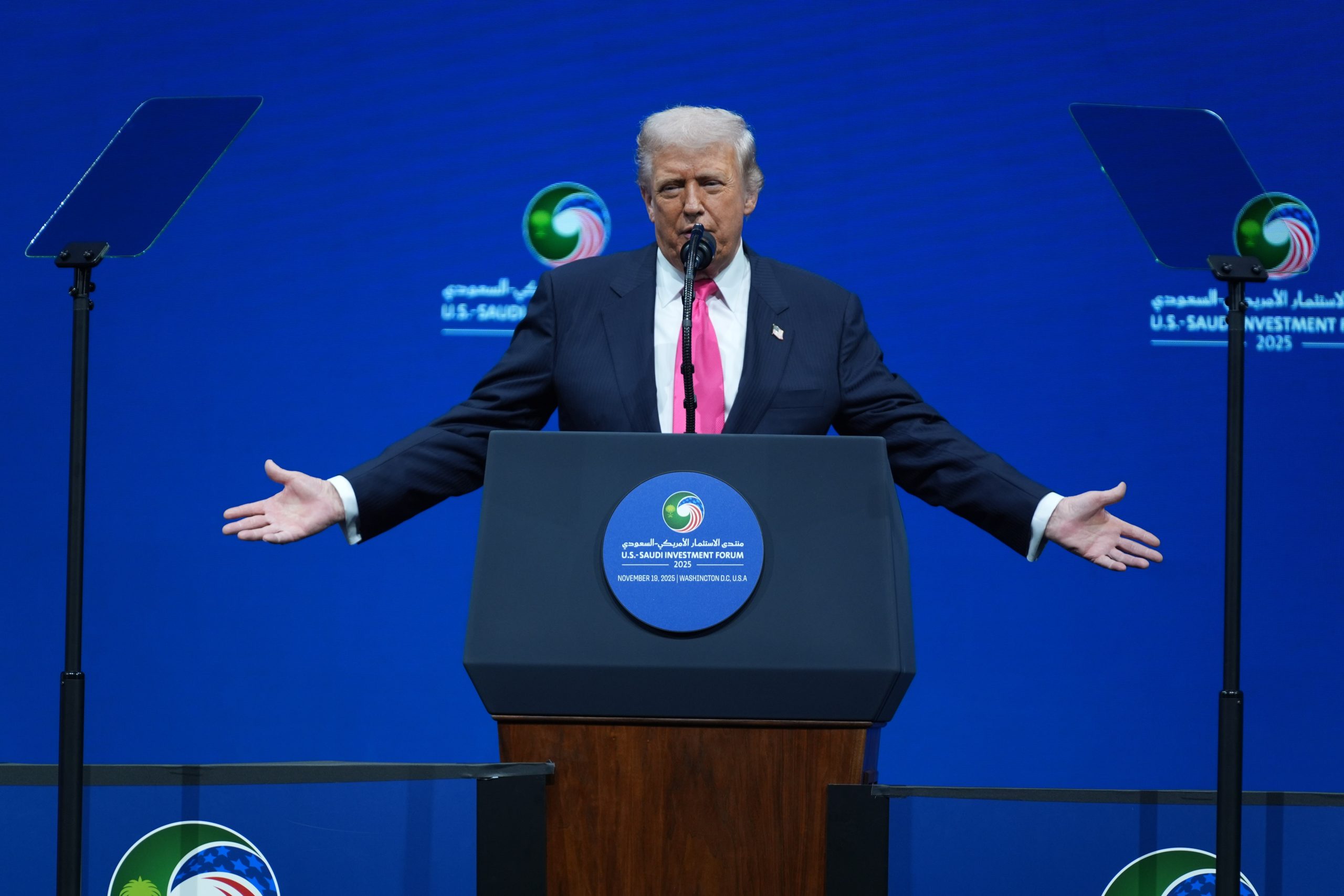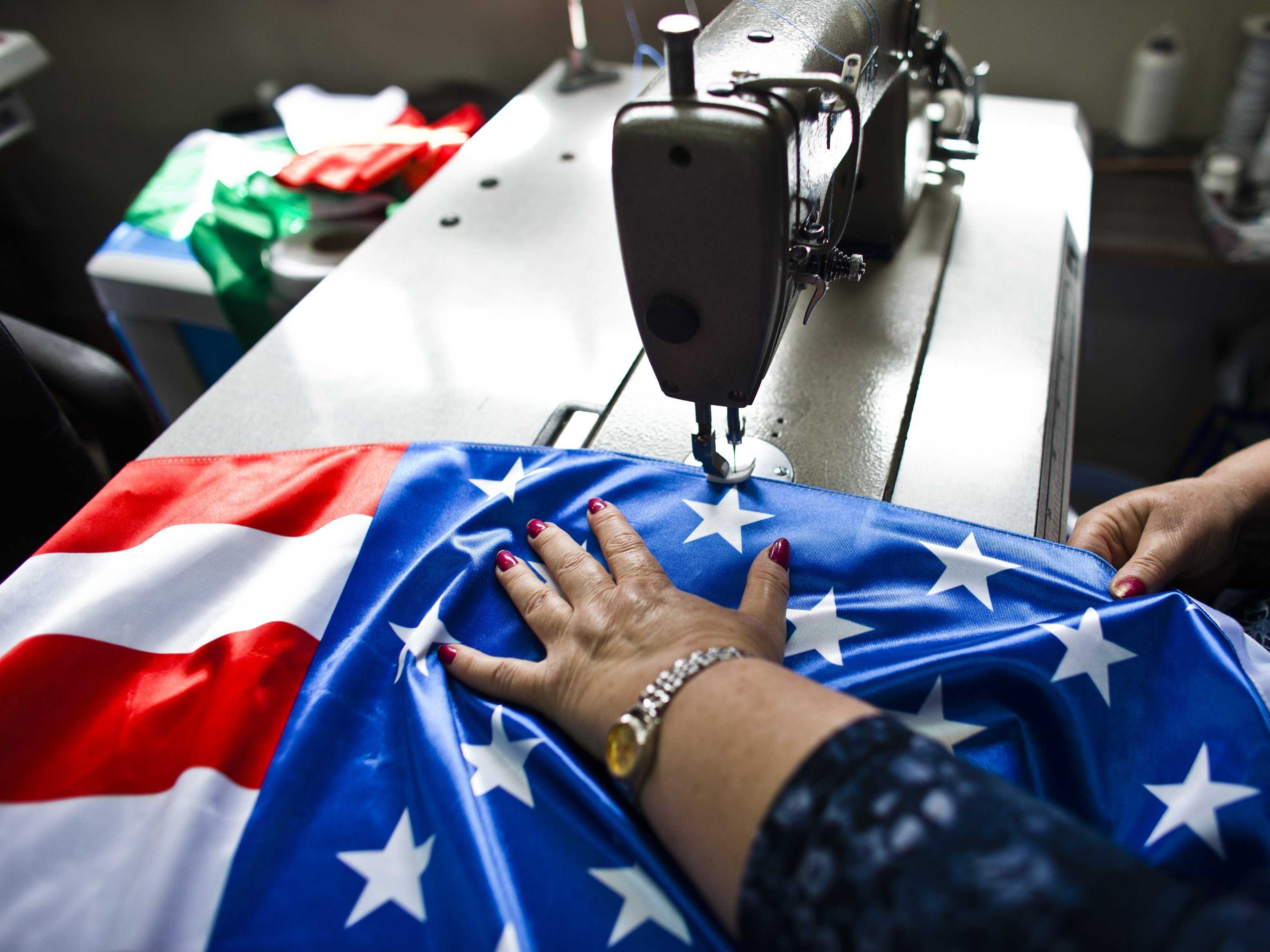The US job market just delivered a plot twist that no one saw coming. After a summer that dragged like a bad sequel and a government shutdown that silenced the data for weeks, employers ramped up hiring in September. The Labor Department revealed today that 119,000 jobs were added, smashing past what economists had penciled in. This surge hits like a breath of fresh air, especially with families and businesses holding their breath through all the chaos.
That slight uptick in the unemployment rate to 4.4% from 4.3% might raise an eyebrow, yet the raw job gains paint a picture of grit and staying power. Households staring down bills feel a spark of hope, companies plotting their next moves sense stability, and even Washington policymakers can exhale a bit. It's the kind of news that reminds you the economy has more fight left than the headlines sometimes let on.

Donald Trump addresses an audience — political leaders like him watch the US job market closely, as September’s hiring gains influence economic policy and financial confidence.
The Delayed Reveal That Kept Everyone on Edge
Picture the tension building over those seven long weeks without a peep from official stats. The shutdown turned a routine report into a ghost story, forcing experts to piece together clues from scattered reports of trouble. Whispers of layoffs at giants like Amazon, where up to 30,000 corporate roles vanished in October, Target trimming staff amid retail jitters, and UPS scaling back added fuel to the fear fire. Investors chewed their nails, wondering if the slowdown was real or just smoke.
But today's drop of the September numbers flips the script. They show hiring held firm despite the summer's softer pace and global headwinds like sticky inflation. Daniel Zhao, chief economist at Glassdoor, captured the mixed thrill perfectly. He noted that the labor market displayed real resilience heading into the shutdown, topping payroll forecasts even as revisions dinged August with a small loss and unemployment crept higher. These figures, frozen in time from two months back, don't capture November's full storm, yet they whisper that the foundation hasn't cracked.
According to analysis reviewed by Finance Monthly, this rebound aligns with broader trends where job creation edges out cuts, a quiet win in an otherwise noisy year. It's fresh proof that American workers and bosses are adapting faster than the uncertainty can catch up.
Crunching the Fresh Figures: A Snapshot of Strength
Let's break down the essentials without the fluff. Employers piled on 119,000 positions in September, a solid outperformance against the 100,000 or so that forecasters chased. The unemployment rate nudged to 4.4%, reflecting more people jumping back into the job hunt, which isn't all bad news. Revisions tweaked July upward by 72,000 jobs while trimming August by 4,000, netting a summer average that still feels sturdy.
These aren't just digits on a screen. They signal that sectors like healthcare and leisure kept churning out opportunities, even as manufacturing felt the pinch from trade ripples. For everyday folks, it's a nudge that the job ladder hasn't pulled up, offering a lifeline amid whispers of recession that echoed all fall.
How This Hiring Wave Could Ripple to Your Bank Account
Job growth isn't some abstract econ-speak. It's the engine that cranks up spending power for millions, turning cautious budgets into bolder buys. With more paychecks flowing, consumers loosen their grip on wallets, propping up everything from corner stores to online carts. That extra income doesn't just cover groceries. It sparks renovations, road trips, and yes, even those impulse splurges that keep the wheels turning.
Stability in employment steadies the housing front too. Families gain the nerve to list homes or lock in loans, breathing life into builders and realtors who've been in wait-and-see mode. Investors perk up as well, viewing steady hires as a green flag for stocks and ventures that bet on consumer vibes. And for the Federal Reserve, it's a balancing act. Inflation hovered at 3% last month, double their sweet spot, so this job pop tempers the rush to slash rates while keeping growth in play.
The emotional lift? Immense. After months of nail-biting over cutbacks and shutdowns, this feels like the economy rolling up its sleeves for round two. Businesses sense the shift too, eyeing expansions with renewed gusto as demand perks up.
Navigating the Fed's Next Play: Interest Rates, Savings, and What It Means for You
Now, here's where the September jobs data gets personal, especially if you're eyeing a car loan or padding your emergency fund. The Federal Reserve, that powerhouse steering the economy, juggles two big goals: keeping prices from spiraling and ensuring plenty of jobs. Think of them as the thermostat for borrowing costs. When jobs surge like this but unemployment edges up, it sends mixed signals. Strong hiring suggests the market's humming, cooling the urgency for deep rate cuts that could fan inflation fires.
Yet the slight unemployment rise hints at softening spots, which might nudge the Fed toward easing. As of late October, the benchmark federal funds rate sits at 3.75% to 4%, down from peaks but still pinching savers and borrowers. This jobs report, per expert reads, keeps a December trim on the table but not a slam dunk. Markets dipped on the news, bonds rallied a touch, showing how these old stats still sway today's dollars.
For you, the insight boils down to this: steadier jobs could mean rates hold firmer longer, boosting yields on savings accounts to around 4% or so for high-yield options. That's real money compounding, say $400 extra yearly on a $10,000 nest egg versus lower-rate eras. Take Sarah, a teacher in Ohio we spoke with anonymously. She's stashing for a down payment, and this data lets her breathe easier, knowing lower future rates might shave thousands off her mortgage without jobs vanishing. It's not flashy, but it's the kind of depth that turns headlines into household strategy. Economists like those at Principal Asset Management see equities loving the firm footing here, while bonds bet on measured cuts ahead.
This angle earns its spot because it bridges the macro mess to your micro moves, arming you with context to chat rates at dinner or tweak your budget app.

Workers like this seamstress help drive the US economy — September’s 119,000 new jobs reflect growth in industries supporting American households and businesses.
Shadows on the Horizon, But Light Ahead
No fairy-tale ending yet. AI's march and automation loom, potentially trimming roles in tech-heavy fields where humans once ruled. Immigration tweaks could squeeze supply in farms and construction, spots hungry for hands. And October's layoff tally, the worst for the month since 2003, spotlights pockets of pain in retail and logistics.
Still, the tide leans positive. September's gains outstrip losses, a resilient thread weaving through the worry. The October report drops mid-December, primed to clarify if this momentum holds. For now, this hiring heartbeat offers a silver thread of optimism, letting families plan vacations, entrepreneurs hire help, and investors sleep sounder.
In the end, September's job jolt isn't mere ink on paper. It's a testament to American hustle, a buffer against the buffeting winds, and a quiet promise that brighter days aren't just possible. They're underway.
Beyond the Headlines: What Readers Want to Know Next
What Sparked the Government Shutdown Delay for This Jobs Report?
The partial US government shutdown, triggered by budget standoffs in Congress, halted non-essential federal operations including Labor Department data crunches. This froze the September release, originally due early October, pushing it to today amid backlogs. For consumers, it meant navigating uncertainty without the usual economic compass, amplifying anxiety over personal finances like 401(k)s or job hunts. The delay highlighted how policy gridlock ripples to real lives, but the eventual data drop reassures that core systems rebound swiftly once lights flicker back on.
Does a 4.4% Unemployment Rate Mean It's Tougher to Find Work Right Now?
Not necessarily a red flag, though it stirs understandable jitters. The bump from 4.3% largely stems from more folks re-entering the workforce, chasing openings amid the hiring wave, rather than outright losses. At 4.4%, it's still near historic lows, signaling ample opportunities especially in services and healthcare. Job seekers might face fiercer competition in hotspots like tech, but overall, it reflects confidence in the market's health. For everyday Americans, this means polishing resumes pays off quicker than in deeper slumps, with average search times hovering under three months per recent surveys.
Could These Job Numbers Push the Fed to Cut Interest Rates Sooner?
Absolutely possible, but it's a delicate dance. The robust 119,000 additions ease overheating fears, yet the unemployment tick-up and cooling wage growth keep rate-cut hopes alive for December. With inflation at 3%, the Fed weighs growth against price stability, potentially trimming the 3.75%-4% benchmark by a quarter-point. This matters for you: lower rates could drop credit card APRs by 0.25% or lift mortgage affordability, saving hundreds monthly on big buys. Watch the next FOMC whispers, as this backward glance still shapes forward bets on your borrowing power.














